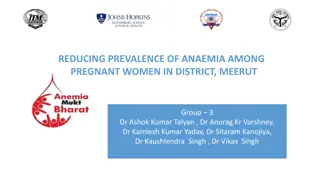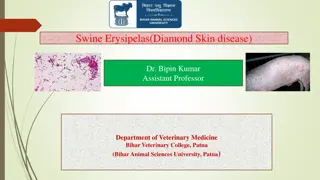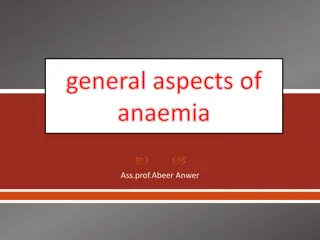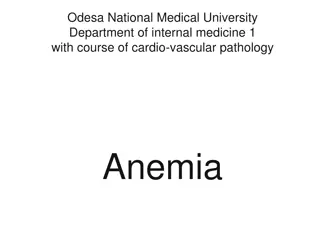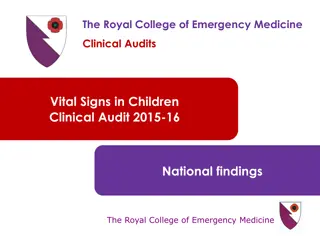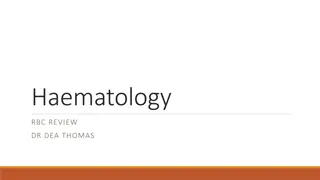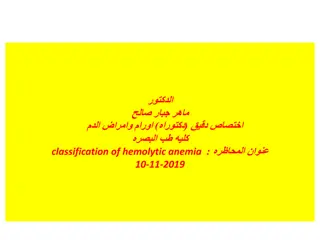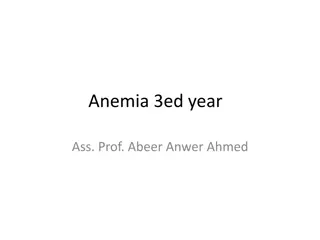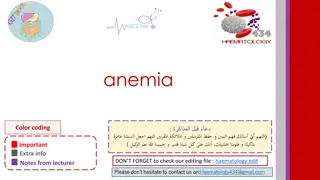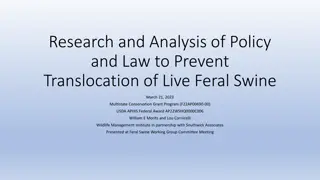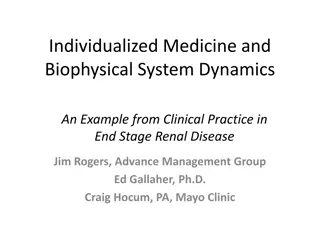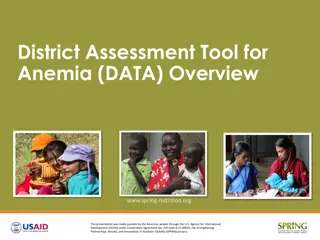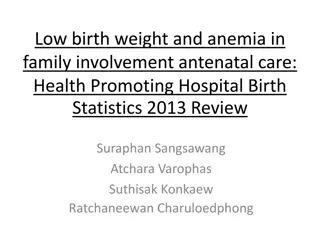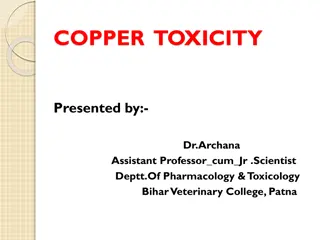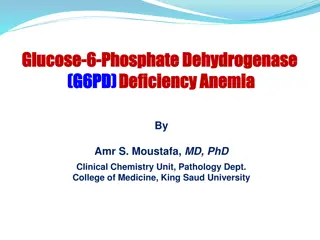Anemia in Swine: Causes, Clinical Signs, and Treatment
Anemia in swine can be caused by factors such as gastric ulcers, internal bleeding, and poor nutrition. Clinical signs include pale skin, rapid breathing, and jaundice. Piglet anemia, a highly fatal disease, is marked by decreased hemoglobin levels and liver degeneration. Diagnosis involves examining red cell and hemoglobin levels. Treatment includes checking and supplementing iron and copper levels in feed.
Download Presentation

Please find below an Image/Link to download the presentation.
The content on the website is provided AS IS for your information and personal use only. It may not be sold, licensed, or shared on other websites without obtaining consent from the author. Download presentation by click this link. If you encounter any issues during the download, it is possible that the publisher has removed the file from their server.
E N D
Presentation Transcript
Anemia VCM-605 Swine Clinical Medicine Dr. Ranveer Kumar Sinha Assistant Professor cum Junior Scientist E-mail: ranveervet@rediffmail.com Department of Veterinary Medicine Bihar Veterinary College, Patna 800 014 (BASU, Patna)
INTRODUCTION Anemia is a condition associated with either a reduction in the number of red cells in the blood, the amount of hemoglobin they contain It is due to: Loss of blood through hemorrhage e.g.. gastric ulceration, trauma to the vulva. Lack of hemoglobin due to dietary insufficiencies, particularly iron and copper. Reduced numbers of red cells. These are produced in the bone marrow and any disease, infection or toxic state affecting it may result in anemia. Anemia is also common as a secondary clinical sign to specific diseases, such as actinobacillus pleuropneumonia
Causes Gastric ulcers Hematoma Internal bleeding Loss of blood Porcine enteropathy (PE) Prolapse of the rectum Torsion of the stomach and intestines Faulty nutrition. Lack of iron or copper. Warfarin poisoning.
Piglet anaemia Nutritional anaemia in suckling pigs. It s a highly fatal disease of suckling pigs caused by marked decrease in Hb and fatty degeneration of liver. Causes: Lack of Copper salts and Iron in sows kept in indoor, or on concrete floor Limited milk diet from sow. Age affected: 3-6 weeks.
Clinical signs Piglets: Piglets appear pale from 7 days onwards and growth is sometimes slower. The colour of the skin is slight yellow or jaundiced. In severe cases breathing is rapid particularly with exercise and there may be a predisposition to scour.
Clinical signs All pigs Pale skin. Rapid breathing. Jaundiced (skin has slight yellow appearance). Mucous membranes of the eyes are pale. Scour Signs of hemorrhage. Symptoms of specific disease. Weakness. May be increased stillbirths.
Diagnosis Clinical sign Blood sample exam: - red cell and hemoglobin levels. (Normal levels 9-15g/100ml), anemia <8g/100ml). A stained blood smear will confirm the shape and size of the red cell: - Specific cell types are involved in the different anemia.
Treatment The intestine can absorb only small amounts of iron daily which may not be enough to reverse the anemia quickly. Iron and copper levels in the feed should be checked. It is also helpful to give an injection of iron dextran 300-500mg depending on the age of the pig. Specific treatment and prevention will depend on the cause. In severe cases, electrolytes can be given either by injection or by mouth.
Prevention/Treatment 1) Add small amount of Fe and Cu in pigs diet at the rate of 25mg of Fe , 5mg of Cu/day/pig. 2) FeSO4 - 3.6 ounces (1 ounce - 30 ml) & Water - 5 quarts (1 quart - 40 ml).Feed 1 gm daily. 3) Paint the udder of the sow daily with following mixtures. FeSO4 - 500gm CuSO4 - 70gm Sugar - 500gm Water - 10 litres. 4) Iron injection of Dextran (Deep I/M) 4th & 14th day 5) Iron must be given within 3 to 4 days after birth 6) Milk in iron is practically nil. Piglets need 7mg during the first week. Wood ash can also be put into the pen. This will not provide iron, but it does contain other important minerals.
Prevention Piglets: The easiest method is to give the piglet an injection of 150- 200mg of iron dextran in either 1 or 2ml dose. Iron is best given from 3 to 5 days of age and not at birth. A 2ml dose at birth causes considerable trauma to the muscles. The sites of injection are either into the muscles of the hind leg or into the neck. Use a 22 gauge needle. Iron can also be given orally but this method is time consuming and the pig must be treated on 2 or 3 occasions at 7, 10 and 15 days of age. Oral pastes available ad lib have been used but the uptake within any litter is variable All pigs: Carry out regular worming programmes Fecal exam for parasites every 3 to 6 months and monitor iron levels in feed.





